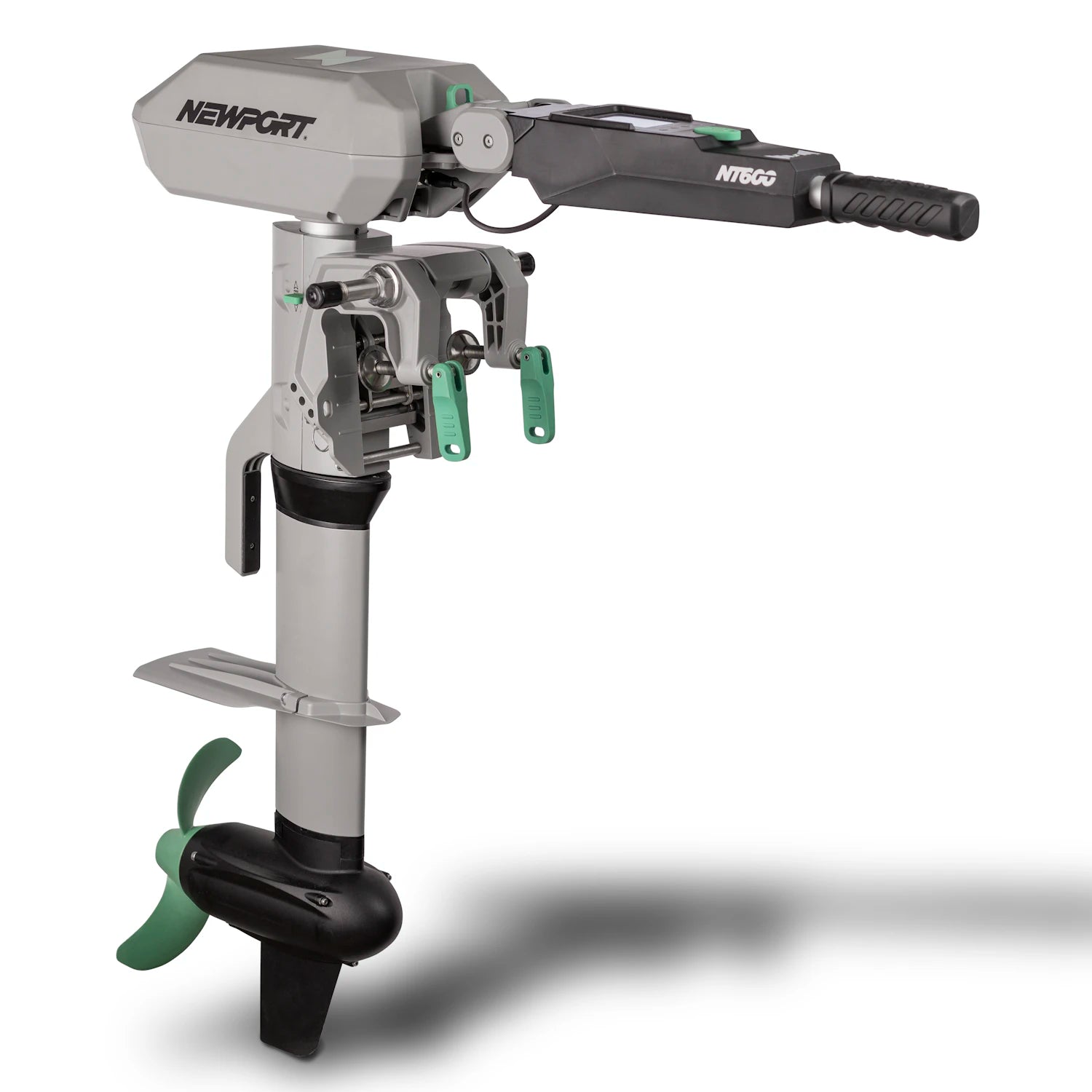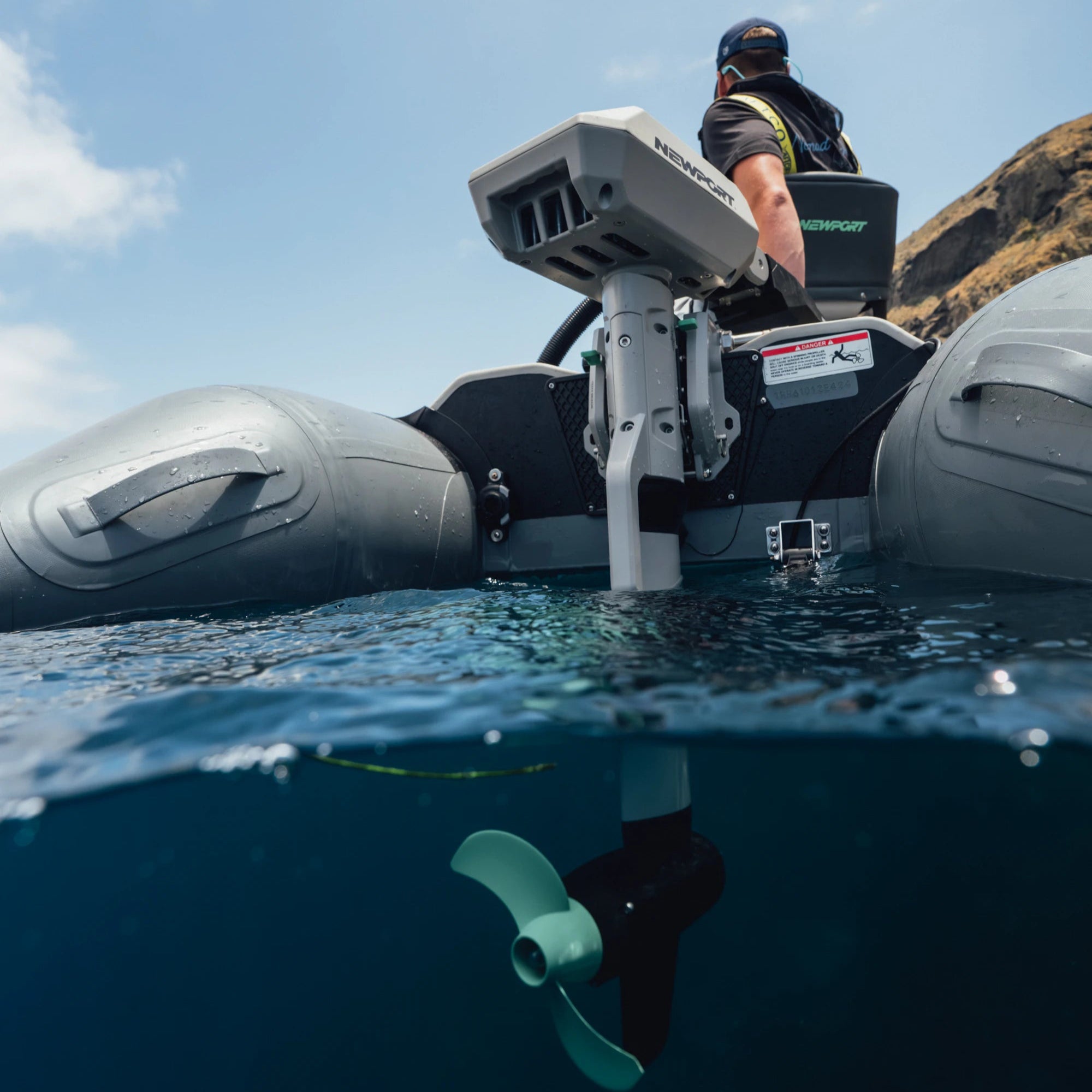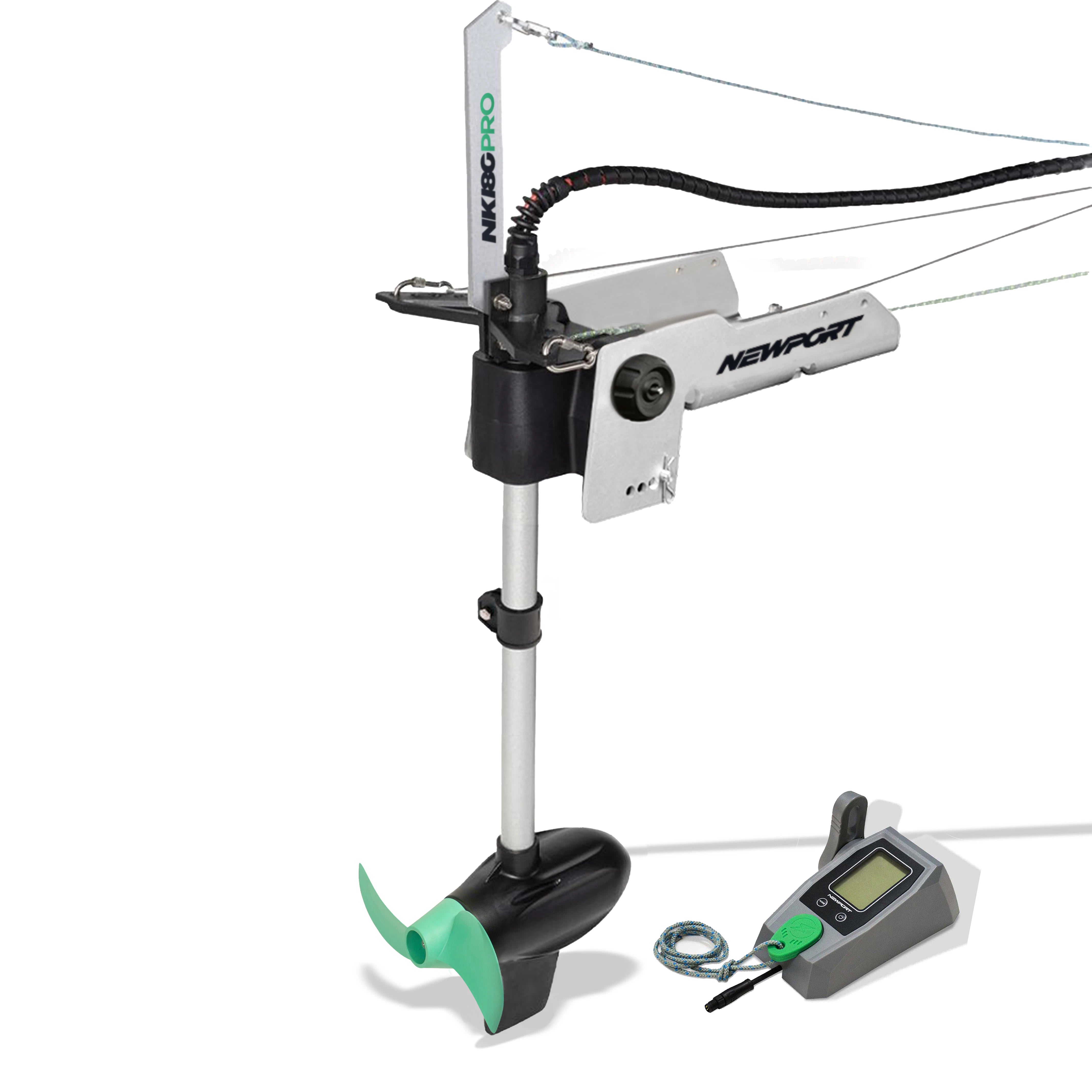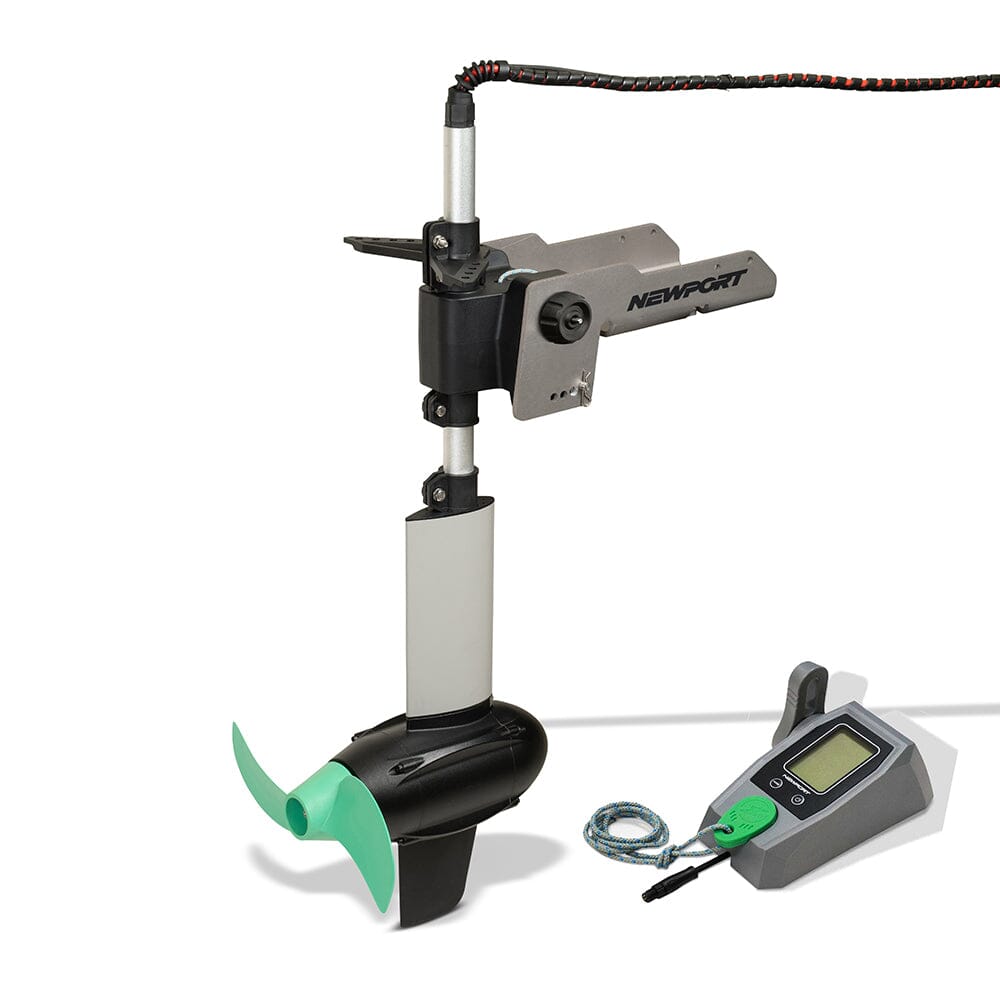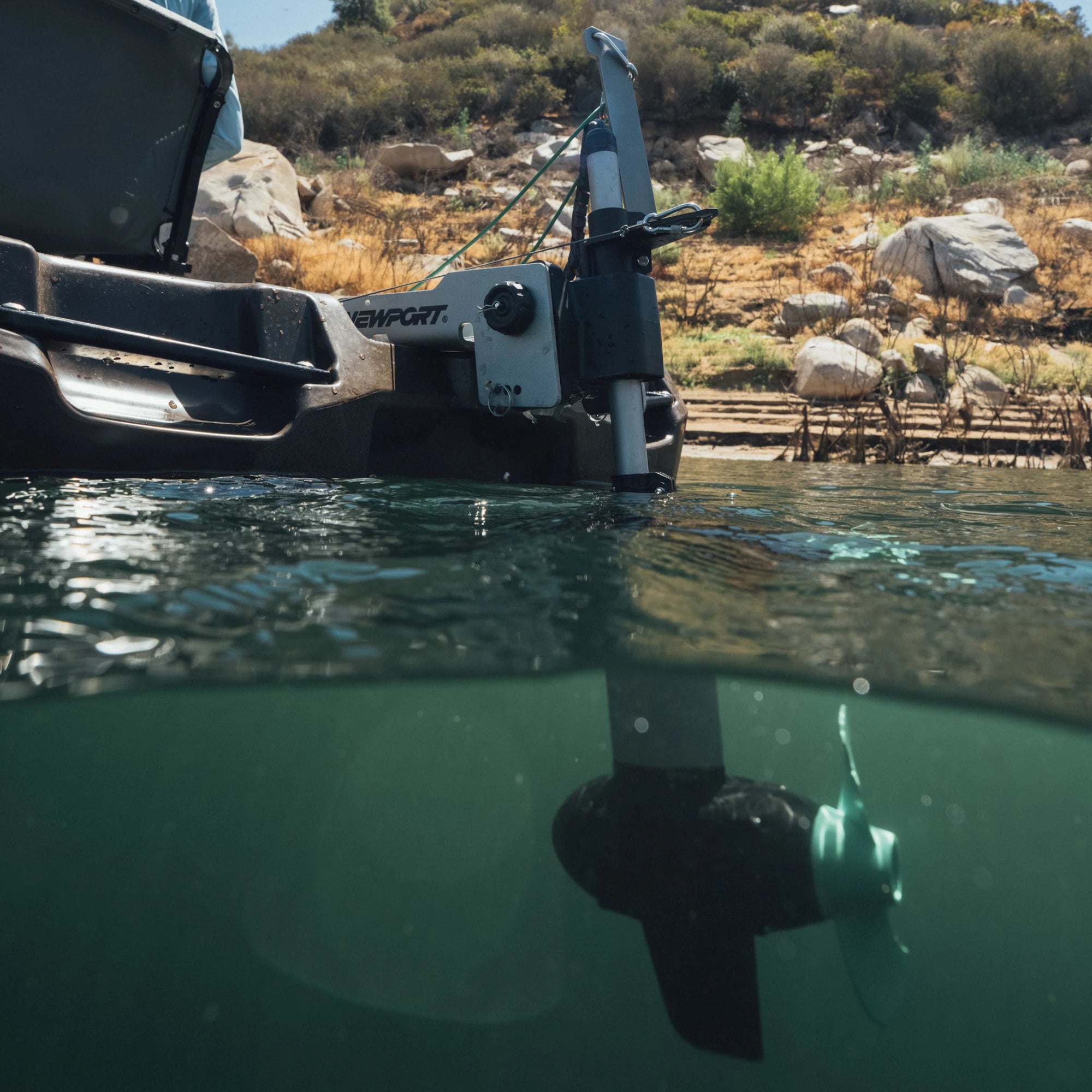Battery Overview
When customers are picking out a motor, the most common questions we get are “What battery should I get?” and “How do I take care of it?”. Getting the correct battery is important for trolling motor performance and ensuring a good time out on the water. What is even more important is the care and maintenance you provide for you battery so you can continue to enjoy your trolling motor. Batteries themselves are devices that hold and store energy to be released at a later time. There are many different types and sizes of batteries, which influence how efficient they are and how much energy they can store. In this article, we will go over the different types of batteries, their lifespans, maintenance and care, and charging.
Types Of Batteries
Batteries are all composed in a similar fashion with a cathode (positively charged material), anode (negatively charged material) and terminals to discharge the buildup of electricity. Depending on the type of battery, all of these parts can vary in their composition.
 Lead Acid
Lead Acid
Wet-Cell (flooded): Wet-Cell are common automotive batteries that can be found almost anywhere. As the name implies, these batteries are called wet-cell due to the fact that they are filled with liquid sulfuric acid. The plates within these batteries will also be composed of lead. They are made with vents and removable caps to allow for gasses to escape while charging and refilling with water when too much water has been converted to gas. However, these are common for leaking, spilling or being damaged from vibration.
Gel: The acid in these batteries has been turned into a gel by adding silica gel. Because a gel is used, you don’t have to worry about acid spilling out of it or leaking. However, due to the gel structure and composition, they will charge at a slower rate. Typical automotive chargers or fast charging will permanently damage this battery, something you don’t want to do since these safe alternatives are 2x the cost of flooded batteries.
AGM: “Absorbed Glass Mats” or AGM batteries typically use a Boron-Silica glass mat that is soaked with acid. These mats are then placed between the lead plates. These glass mats are not fully soaked and therefore cannot spill acid, even when they break. These batteries are completely sealed and recombine oxygen and water inside them, making them maintenance free. AGM batteries can be charged just like flooded batteries and are roughly the same price as gel batteries.
 Lithium
Lithium
New to the market, these batteries don’t use lead acid to power your devices but rather Lithium Metal Oxide and Carbon. The use of Lithium makes the batteries lighter and much more efficient. However, the voltage per Lithium cell produced is 3.7 volts increasing the overall voltage to roughly 14.8 volts. While standard 12V Lead Acid batteries typically have 6 cells, Lithium batteries only have 4 cells (3.7 volts x 4 cells = 14.8 volts). This higher voltage can sometimes damage devices that are only designed for a 12V system. It is for this reason that many trolling motor companies, including Newport Vessels, generally do not recommend the use of Lithium batteries with our products. However, If you can find a "12V" Lithium battery with an output rated less than 13.8V, this could safely be used with the trolling motor. In addition to Lithium batteries being expensive compared to Lead Acid, in the chance that they fail, there is a small percentage of them catching on fire. Not ideal for anyone using a battery, let alone for use on a boat.
Lifespan
You will often see the term “cycle” used for describing how long a battery can properly operate and Depth of Discharge (DOD) for describing the percentage of charge that is used or discharged. A single cycle represents a discharge of 80% of a battery’s capacity and then recharged back to 100%. Basically, batteries are only good for about 80% of their full charge. More commonly used is a graph that displays how many recharge cycles a battery has relative to the percentage of discharge. When shopping for batteries, don’t blindly assume a battery will last 10 years, always double check the cycle rating and at what DOD that rating is given. If a battery is rated for a 5 Year Life at 10% DOD, this would not be a wise battery to purchase for your trolling motor if you will be discharging it at 50% to 80% of its capacity. This would lower the life expectancy of the battery to a year or two with the intended use.
A battery’s lifespan is dependent on the depth of discharge that it frequently experiences. Theoretically, the less your battery is discharged the longer your battery will last. We say theoretically because it’s not practical to only use 5-10% of your battery’s capacity for trolling motor purposes and can also lead to inefficiencies within the battery. These 5-10% shallow cycles allow for the buildup of Lead Dioxide or sulfate on your plates, which will lower the efficiency of your battery. On the other side, 90% DOD consistently will also lower the life expectancy of your battery. Most battery manufacturers recommend 50-80% DOD to get the most practical use out of your battery while still getting the most life your of your battery. Check out the chart down in the Maintenance section for a visual image of this.
Charging
Different batteries require different types of charging and chargers. Below we will cover the charging of SLA/AGM style batteries as they are the most commonly used batteries with trolling motors. Battery charging takes places in 3 stages: Constant-Current (Bulk), Topping Off, and Float charging. With a flooded battery (or batteries that are not sealed), be sure to charge them in a well-ventilated area. Due to the chemical reaction that occurs when charging, hydrogen is released, hydrogen is a flammable gas that can cause harm if ignited.
Constant-Current: During this stage, the bulk of the charging is done. A little over ⅔ of the battery is charged over a 5-8 hour time span. This stage is referred to as constant-current because the charger sends a constant maximum voltage the battery can safely handle during this stage. This voltage can range anywhere from 10.5 - 15 volts.
Topping Off: Once the battery is ⅔ recharged, the internal resistance within the battery begins to increase and charging transitions to the next stage where the last ⅓ is filled. The charge current at this stage drops and battery voltage increases to 14.2 - 15.5 volts. This stage takes roughly 7-10 hours. This stage is extremely important to avoid sulfation on the negative plates of your battery. However, once the battery is fully charged, it should not remain at this voltage level for more than 48 hours as it can damage the positive plates.
Float: This last stage comes into effect when the battery has reached a full charge. You will hear this stage commonly referred to as trickle or maintenance charge. The main purpose of this stage is to prevent the battery from discharging while it waits to be used. The voltage should drop to 12.8 - 13.20 for float charging.
Chargers
While they might seem very simplistic and unimportant, choosing the right charger is necessary for maintaining the health and extending the life of a battery. For deep cycle batteries, you should never use standard automotive chargers nor should you try to use jumper cables from your car to charge your battery. Automotive chargers do not regulate their charge very well and charging your deep cycle battery to your car battery could spell disaster, especially for AGM or Gel batteries. Standard 12V deep cycle battery chargers are less expensive and can be used, but if it doesn’t have a microprocessor you will have to adjust the voltages according to the information above. To avoid overcharging or charging your battery too quickly, we recommend a charger that has 1/10 the amp charging rate of the Amperage Hour (Ah) rating on your battery. For example, a 5 amp battery charger should be used on your 50Ah battery.
To avoid constantly tweaking the charging and voltage levels of your batteries, it might be worthwhile to invest in a charger that has a microprocessor. This will regulate the voltage and current into your battery to ensure it is not overcharged and is completely charged. This is the best option to extend the life of your battery while focusing on other important projects you may have.

Maintenance
You can monitor the status of your battery by checking its voltage level to ensure it is in good health. However, a healthy voltage doesn’t always indicate a healthy battery.
Voltage
The voltage a battery outputs tell us a lot about the state of charge it holds. The depth of discharge can be measured by the voltage. You can refer to the chart in “lifespan” for a visual reference.
100%: At full charge, each cell should measure 2.12 - 2.15 volts per cell (VPC). Since there are 6 cells per 12V battery, this would equal 12.72 - 12.90 volts.
50%: At half charge, each cell will measure roughly 2.01 VPC. This would make the total 12.06 volts.
0%: A fully discharged battery will read less than 1.75 VPC. This would bring the total voltage to 10.5 volts or less.
Storage
When storing your battery during the offseason or times of nonuse, always store the battery fully charged and disconnect all appliances from it. If a battery is stored partially discharged, this could ruin your battery. Using the following rules when storing your battery can help extend its life:
- Store fully charged with a trickle charger.
- Disconnect all devices from it.
- Store in a climate controlled environment.
- DO NOT fully discharge a battery when you first get it. Lead-Acid batteries do not have “memory”.
- Don’t purchase batteries to be used months or years later. It is better to buy and use a battery when you need them.

Sulfation
Sulfation is the chemical process that occurs between the sulfuric acid and lead plates within a battery. As your battery is being used and discharging power, sulfate crystals begin to form on the negative plates within the battery. This is a completely normal reaction that occurs within a battery and can be reversed by charging your battery shortly after use.
However, after being discharged for a prolonged period, these sulfate crystals begin to harden and decrease the amount of space on the lead plates and therefore lower the batteries ability to hold a full charge. If caught early enough, within a week or two, these effects can be reversed. Anything longer and you risk permanent damage to your batteries.
In today’s market, there are devices labeled desulfators. When hooked up to your battery, these devices send low voltage frequency to slowly dissolve these hardened crystals to free space on the lead plates within the battery. It is important to look for ones that automatically measure and vary the voltage they send, instead of ones that only use one voltage frequency. These devices have mixed results and reviews depending on the actual issue with your battery. Batteries are made differently and you should consult the manufacturer before using one of these products.
Summary
Batteries are the backbone of any trolling motor or electrical device. Having the knowledge and information to choose the correct battery for your needs and understanding how to care for it afterwards is essential for consistent and reliable power.
Whether you decide to go with Gel, AGM or Sealed Lead Acid, it is important to know the pros and cons of each. One might be better than another depending on your preference and the application that you plan to use them in. While Lithium batteries are considered the battery of the future, we cannot currently recommend their use with trolling motors due to their high voltage output.
Voltage, as we talked about earlier, plays a vital role in indicating battery charge level and health. Knowing the voltage of your battery can tell you how much charge it has left and whether it’s functioning properly or faulty. It is always good to frequently check the voltage of your battery to ensure it is being properly maintained.
Maintaining your battery is extremely important to ensure it can properly function and power your devices. Improper care and or storage can lead to excess sulfation that can permanently damage your battery. While there are devices that advertise themselves as desulfators, you should consult the battery manufacturer before using these devices as they have mixed results.

